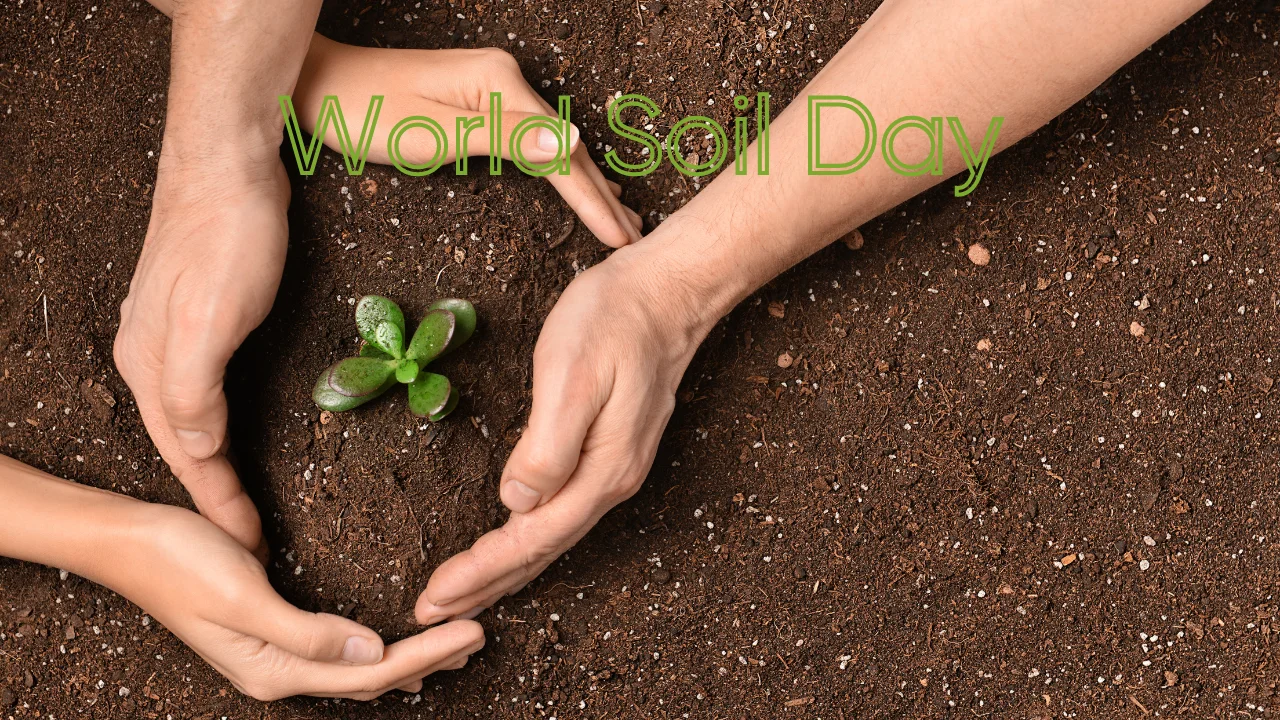Description

Disclaimer: Copyright infringement not intended.
Context
- Every year, on 5th December, the day is recognized as World Soil Day.
- Several international institutions commemorate this day, including the UN-affiliated Food and Agriculture Organization (FAO).
About
The Origins of World Soil Day
- The theme of World Soil Day: “Soil and water, a source of life”
- Because of rising industrialization and the construction of numerous multi-story buildings around the world, the International Union of Soil Sciences (IUSS) took the initiative in 2002 to provide a day to increase awareness about soil and its effects on human life.
- It also aimed to reduce soil erosion and degradation.
- Under the leadership of Thailand's King, the United Nations Food and Agricultural Organisation took the initiative to establish the day.
- Each year, there is a fresh topic to focus on a key cause to conserve soil.
- World Soil Day has grown in popularity and significance due to the tireless efforts of many organizations worldwide.
- The primary focus is to build a sustainable ecosystem and eradicate or at least target the root causes involved in proper soil management and soil salinization to aid better agricultural yield in specific regions across the globe.

According to scientists, soil-centric agriculture encompasses the following:
- Adopt conservation agriculture, which involves no-till, residue mulch, crop rotations, and the integration of crops with trees and livestock to restore soil nutrients and improve soil health.
- The age-old practice of broadcasting fertilizers should be discouraged by promoting the use of seed-cum-fertiliser drill machines to increase water use efficiency in the soil.
- Use of cover crops
- Use of mulching
- Promote Agroforestry
- Adopt smart soil system solutions like Bhoomitra and Krishi-RASTAA
- Promote soil/crop/water management practices that enhance sequestration.
- Encourage crop diversification
- Eliminate the practice of farm residue burning
- Adopt direct-seeded and aerobic rice in place of traditional puddled and flooded rice.
- Reduce the use of chemicals and enhance efficiency by improving soil health
- Use precision agriculture, digital innovations, robotics, and artificial intelligence
- Practice carbon farming as it offsets emissions and also restores degraded soils
- Reclamation of saline, alkaline, and acidic soils; need-based use of micronutrients (zinc, iron, manganese, etc) and biofertilisers
- Mechanization for deep placement of fertilizers is another option for fertilizer use efficiency.
- Integrated nutrient management (using organic manures like cattle dung, vermicompost, and poultry manure in combination with mineral fertilizers) could considerably improve soil health as well as crop yields.
Threats to Soil Health
- The most prevalent causes of soil degradation are salinization and acidity.
- This endangers agricultural production, food security, and sustainability.
- The goal of World Soil Day is to raise awareness of this rising problem and to promote healthier ecosystems around the world.
What Are the Signs of Poor Soil?
- The first indicator of bad soil is a lack of moisture, which causes it to dry out, crumble, and crack.
- This type of dirt crumbles quickly and is highly rigid, making it difficult to break apart.
- Watering and moisturizing this bad soil daily is the best approach to care for it.
- Heavy cultivation or animal grazing can also degrade soil quality; excessive fertilizer use can make the soil exceedingly unhealthy and inhospitable for plants or farms.
What are the Initiatives to Improve Soil Health?
- The Nutrient Based Subsidy (NBS) Scheme
- Paramparagat Krishi Vikas Yojana
- Carbon Farming
- Soil Health Card Scheme
- Organic Farming
- Fertilizer Self-Sufficiency
- Digital Agriculture
Call to Action
World Soil Day 2023 encourages people to work together to protect and manage soil resources sustainably. It promotes individuals, communities, governments, and organizations to embrace soil-health-promoting practices such as:
- Reducing soil erosion: Implement practices that minimize soil erosion, such as planting cover crops, using no-till farming techniques, and restoring eroded lands.
- Enhancing soil organic matter: Increase soil organic matter by incorporating compost, manure, or other organic materials into the soil.
- Minimizing chemical use: Reduce reliance on synthetic fertilizers and pesticides, opting for organic alternatives whenever possible.
- Promoting sustainable agriculture: Support sustainable agricultural practices that protect soil health, such as crop rotation, cover cropping, and integrated pest management.
- Advocating for soil conservation policies: Encourage governments to implement policies that support sustainable soil management practices and protect soil resources from degradation.

The Way Forward
- Urgent efforts and an enabling policy environment are needed for restoring soil health.
- It is necessary to educate people about the importance of soil in the agro-food system and biodiversity.
- Awareness campaigns should be organized with youths at the forefront to bring a change in the mindset of the people.
- People should be educated on the importance of soil conservation for the present and future to shift the focus from traditional farming to regenerative farming for improving soil health and fertility.
- Increasing awareness about the importance of soil health through education campaigns and outreach programs is essential for fostering a global understanding of the need for sustainable soil management.
- This day serves as a platform to highlight the significance of soil conservation and sustainable land management practices.
- World Soil Day serves as a poignant reminder of the vital role that soil plays in sustaining life on Earth.
- In the era of global challenges like erratic climate change and food and nutritional security, the health of our soil becomes even more critical.
|
PRACTICE QUESTION
Discuss the importance of soil health in sustainable agriculture and its implications on food security. Examine the key factors affecting soil health and suggest measures to enhance and preserve soil fertility.
|












